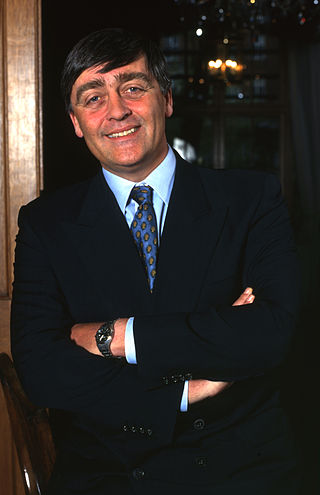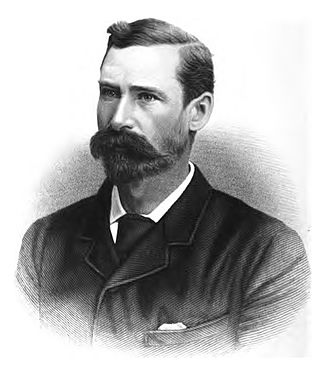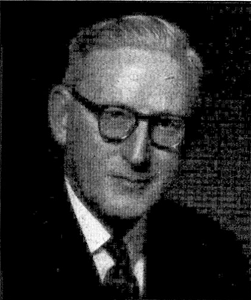Related Research Articles

Major General Gerald Cavendish Grosvenor, 6th Duke of Westminster, was a British landowner, businessman, aristocrat, Territorial Army general, and peer. He was the son of Robert Grosvenor, 5th Duke of Westminster, and Viola Lyttelton. He was Chairman of the property company Grosvenor Group. In the first-ever edition of The Sunday Times Rich List, published in 1989, he was ranked as the second richest person in the United Kingdom, with a fortune of £3.2 billion, with only Queen Elizabeth II above him.

The Corps of Royal Engineers, usually called the Royal Engineers (RE), and commonly known as the Sappers, is the engineering arm of the British Army. It provides military engineering and other technical support to the British Armed Forces and is headed by the Chief Royal Engineer. The Corps Headquarters and the Royal School of Military Engineering are in Chatham in Kent, England. The corps is divided into several regiments, barracked at various places in the United Kingdom and around the world.

Arthur Clifford Hartley, CBE was a British civil engineer. Graduating with a bachelor's degree from Imperial College London, Hartley worked for the North Eastern Railway and an asphalt manufacturer before joining the Royal Flying Corps during World War I. He became a qualified pilot, with the rank of major and joined the Air Board where he was involved with the development of interrupter gear. His war work was rewarded with his appointment as an Officer of the Order of the British Empire (OBE). He left the corps after the war and spent five years as a consulting engineer before he joined the Anglo-Persian Oil Company.
Sir Robert Meredydd Wynne-Edwards CBE, DSO, MC and bar was a British civil engineer and army officer. Wynne-Edwards was born in Cheltenham and educated at Giggleswick School and Leeds Grammar School before being commissioned into the Royal Welch Fusiliers at the outbreak of the First World War. He served on the Western Front in France where he received a Mention in Despatches, Distinguished Service Order and a Military Cross and bar for his gallantry and leadership. Following the war he studied engineering at Christ Church, Oxford from which he graduated with second class honours in 1921.
Vernon Alec Murray Robertson, CBE, MC and bar was a British civil engineer in the railway sector. During the First World War he served with the Royal Engineers with distinction, earning the Military Cross twice. Robertson later worked for a number of railway companies before becoming Chief Civil Engineer to the London Passenger Transport Board, Southern Railway and the Southern Region of British Railways. During and after the Second World War he returned to the army and served with, and commanded, the Engineer and Railway Staff Corps. Robertson served as president of the Institution of Civil Engineers for 1949–50.

General Sir Peter Anthony Wall, is a retired British Army officer who served as the Chief of the General Staff, the professional head of the British Army, until September 2014. Wall had previously been the Commander-in-Chief, Land Forces from August 2009 to September 2010. He succeeded General Sir David Richards as Chief of the General Staff in September 2010, the latter going on a month later to be Chief of the Defence Staff.
Sir William "Kirby" Laing was a British civil engineer.

John Clarke Hawkshaw was a British civil engineer.
Sir Allan Stephen Quartermaine, was a British civil engineer. He started his career in the Hertfordshire county surveyor's office and served in the Royal Engineers during the First World War, constructing railways in the Middle East and being awarded the Military Cross. After the war he continued to work for local authorities before joining the Great Western Railway (GWR), where he became chief engineer by 1940. During the Second World War he served as Director-General of Aircraft Production Factories before returning to the GWR to construct military railway facilities. After the war he refused a position on the Railway Executive of the British Transport Commission as he disagreed with nationalisation of the railways. Despite this he transferred to become chief engineer of the Western Region of British Railways in 1948 and later served as an adviser to British Rail on modernisation. Quartermaine served as president of the Institution of Civil Engineers for 1951–52 and was knighted in 1956.

Henry Francis Cronin CBE, MC, BSc (Eng) was a British civil engineer and army officer. He served in the Royal Inniskilling Fusiliers and the Royal Engineers during the First World War and was awarded the Military Cross for constructing defensive works and taking part in assaults under heavy fire. Cronin was appointed chief engineer of London's Metropolitan Water Board in 1939 and held that position until 1959. During the London Blitz he worked hard to maintain water supplies for fire fighting.
Wilfrid Philip Shepherd-Barron, MC, TD, LlD (1888–1979) was a British civil engineer and army officer.
John Baxter, is a British nuclear engineer, and currently the Group Engineering Director at BP.

Sir Frederick Arthur Whitaker was a British civil engineer. Although born in the Colony of Natal, he was educated in Liverpool and received a Master of Engineering degree from the University of Liverpool. Whitaker joined the Civil Engineer in Chief's Department of the Admiralty at the age of 22 and spent much of the rest of his career there. His earlier work included Royal Navy bases in the United Kingdom, Jamaica, Malta and Singapore during the First World War and Interwar period. In 1934 he became Deputy Civil Engineer-In-Chief to the Admiralty, being promoted to Civil Engineer-In-Chief in 1940. Whitaker held that position for 14 years, which included most of the Second World War, and during that time was ultimately responsible for all of the Admiralty's civil engineering projects. He retired from the Admiralty in 1954, becoming a partner for an engineering consultancy.

Sir James Rufus McDonald is a British engineer and educator, serving as principal and vice-chancellor of the University of Strathclyde since 2009. He served as the president of the Royal Academy of Engineering between 2019-2024, and is also a visiting professor at NYU Tandon School of Engineering.
Jean Venables is a British civil engineer who in November 2008 became the 144th President of the Institution of Civil Engineers, the first woman to be elected to the position.
Major General Denis Arthur Kay Redman, CB, OBE was a senior British Army officer. He was Director of Electrical and Mechanical Engineering from 1960 to 1963 and therefore head of the Corps of Royal Electrical and Mechanical Engineers. He served as Colonel Commandant of REME from 1963 to 1968.
Michael Norman Tizard Cottell was a British civil engineer.
Rachel Susan Skinner is a British civil engineer with Canadian-based consultant WSP Global. She was named one of the Daily Telegraph Top 50 Influential Women in Engineering in 2016 and both the Best Woman Civil Engineer and the Most Distinguished Winner at the European Women in Construction and Engineering Awards in 2017. Skinner became the youngest president of the Institution of Civil Engineers in 2020. In 2019, she was elected a Fellow of the Royal Academy of Engineering (FREng). She was appointed CBE for services to infrastructure in the 2022 New Year Honours.
Major-General George "Gus" Brian Sinclair was a British Army officer. After the Royal Military Academy Sandhurst Sinclair joined the Royal Engineers in 1948. He served in Korea during the aftermath of the Korean War and was quickly appointed adjutant of his regiment. Sinclair served as adjutant of the British garrison on Kiritimati for the Operation Grapple thermonuclear weapon tests. From 1969 he was Commander Royal Engineers Near East Land Forces, based at the Sovereign Base Areas of Akrotiri and Dhekelia and was responsible for recovering buildings from a British training base abandoned in the aftermath of the 1969 Libyan coup d'état.
Major-General John Castle Woollett, was a British Army officer. He joined the Royal Engineers in 1935 and studied for a degree in mechanical sciences at St John's College, Cambridge. Woollett joined the British Expeditionary Force (BEF) in France in September 1939, at the start of the Second World War. After the BEF was evacuated to the United Kingdom in 1940 he volunteered for commando service. Woollett commanded the demolition engineers in Operation Archery, a 1941 raid on Vågsøy in German-occupied Norway. He commanded 16 Field Squadron, an armoured engineer unit, from 1942. With the 79th Armoured Division he took part in the North-West Europe campaign of 1944–45, assisting with river crossings and demolition of German strongholds, and won the Military Cross.
References
- 1 2 3 "List of Fellows".
- 1 2 3 4 'FRANCIS, Sir (Horace) William (Alexander)', Who's Who 2013, A & C Black, an imprint of Bloomsbury Publishing plc, 2013; online edn, Oxford University Press, Dec 2012; online edn, Nov 2012, accessed 31 Dec 2012.
- ↑ Masterton, Gordon (2005), ICE Presidential Address , retrieved 29 December 2012
- ↑ Howie, Will (1 December 1999). "President for a new millennium". New Civil Engineer. Retrieved 23 December 2012.
- 1 2 3 4 5 "Speakers". First Forum International. Archived from the original on 10 September 2013. Retrieved 23 December 2012.
- ↑ "No. 49257". The London Gazette (Supplement). 7 February 1983. p. 1860.
- ↑ "Engineer and Logistic Staff Corps: A Network of Advisers to Defence" (PDF). Ministry of Defence. Retrieved 1 January 2013.
- ↑ "Staff Corps Membership". Ministry of Defence. Retrieved 1 January 2013.
- ↑ "No. 50868". The London Gazette (Supplement). 23 March 1987. p. 3932.
- ↑ "No. 53141". The London Gazette (Supplement). 21 December 1992. p. 21482.
- 1 2 "Royal Academy of Engineering Awards Dinner 2012 Programme" (PDF). Retrieved 23 December 2012.
- ↑ "Security Composites Limited". Thermoplastic Composites Infrastructure Cooperation Network. Retrieved 23 December 2012.
- 1 2 "Our People". Lighthouse Club. Retrieved 23 December 2012.
- ↑ "No. 52009". The London Gazette . 5 January 1990. p. 221.
- ↑ "Honorary Graduates of the University". Aston University. Retrieved 23 December 2012.
- ↑ Institution of Civil Engineers. "Past Presidents" . Retrieved 19 May 2008.
- ↑ "Sections". Civil Engineers Club. Retrieved 23 December 2012.
- ↑ "The Institution Award". Chartered Institution of Highways and Transportation. Retrieved 23 December 2012.